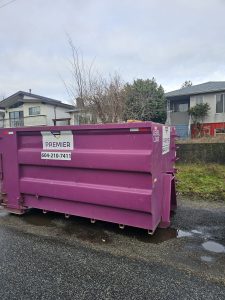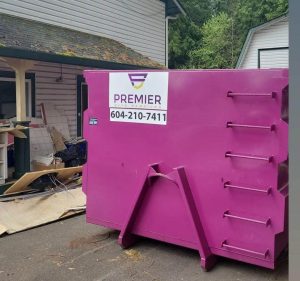As a newcomer to Canada, there are a number of things you’ll need to get used to. While it may not be the most exciting subject, understanding how to lawfully dispose of household waste can differ significantly from what you are used to in your home country.
Recycling and rubbish disposal rules in Canada can be complicated at times, and they frequently differ between towns. It’s important to understand what goes where and how it’s collected before you put your trash out.
Avail Bin Renting in Abbotsford
Garbage Segregation in Canada for Household Waste
Everything does not go in the same bin. Depending on the substance, Canadians are strongly encouraged to sort their rubbish into blue, green, and black bins. Sorting is essential for reducing the environmental impact of your waste.
When you recycle, the objects you throw away are sold to reprocessors who turn them into new products. Meanwhile, biogas and compost are made from organic waste. It’s necessary to check local regulations because they can differ by the municipality, but here’s a general idea of what belongs where.
Green Bin – Organic and Food Waste
Organics, such as food trash and paper bags, are disposed of in green bins.
What Can Go in the Green Bin?
Vegetables, meats, dairy products, nuts, shells, and baked goods can all go in the green bin, both cooked and uncooked. Paper products like pizza boxes and paper plates (as long as they’re not coated with wax or plastic) are also permitted, as are coffee grounds, filters, and tea bags. Pet waste, as well as diapers, can go in the green bin, depending on where you live.
In reaction to COVID-19, several towns have amended their green bin bylaws, requiring that paper napkins, towels, or tissues be disposed of in the garbage rather than the green bin.
Blue Bin – Recycling
Items that can be recycled go in the blue bin. Non-recyclable objects can cause an entire batch of otherwise fine recyclables to be thrown out, therefore sorting them properly is essential. Recyclables are usually thrown into the blue bin without being bagged.
What Can Go in the Blue Bin?
Glass, rigid plastics, soft and stretchy plastics, metal, paper, paper containers, cardboard, and foam polystyrene are all acceptable.
Black Bin – Garbage
What Can Go in the Black Bin?
Everything that doesn’t fit in the green or blue containers goes into the black bin, also known as the garbage bin. Hazardous materials, electronics, yard debris, and big goods are the main exceptions. Garbage collection prices in many towns are determined on the size of your black bin.
Garbage Segregation in Canada for Specific Waste
Yard waste
Yard garbage is usually collected every other week, such as raked leaves or branches. To find out when yard waste is collected in your neighbourhood, consult your municipality’s garbage collection schedule. Yard garbage can also be taken to drop-off locations where it is composted and reused.
Cooking Grease
Cooking grease should never be flushed or rinsed down the drain since it can easily clog your pipes. Wait for the grease to solidify before scraping it into your green bin. It can be composted because it is an organic material.
Pet Waste and Hair
There are several options for disposing of pet waste and fur. It can be placed in the green bin in most communities. Other alternatives include flushing it down the toilet, burying it, or double bagging it so it can be thrown in the garbage.
Oversized Items
Kitchen appliances, televisions, and sofas may have a different pickup schedule than your typical trash. Oversized objects can be placed on the curb next to your other bins. If you live in a condominium or apartment building, you may need to hire a private business to pick up your belongings. For further information, consult your local rules or condo by laws.
Your transfer to Canada will be a lot easier if you learn how to properly sort and dispose of your home waste. While the rules may appear complicated at first, understanding what goes in which container will come effortlessly with practice.






